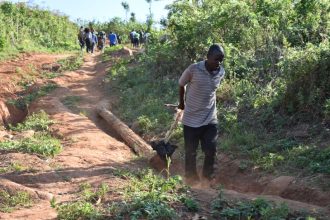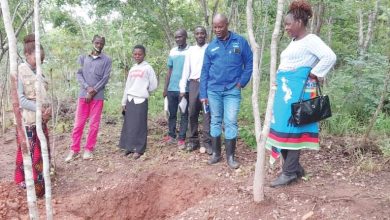Malawi’s dreams on about international bus terminals
KONDWANI MAGOMBO of Malawi News Agency explores what Malawi is missing by not having an international bus terminal, especially in the country’s major cities.
An argument erupted in an international bus from Roadport bus terminal in Harare, Zimbabwe, heading to Lusaka, Zambia.

The subject under debate made this writer sink deeper into his seat, hiding behind the day’s copy of The Herald newspaper.
Two women, apparently a Zambian and a Zimbabwean, were outshining each other on how best international bus terminals in their respective countries were.
“Lusaka’s Intercity Bus Terminal cannot be compared to Harare’s Roadport in all aspects!” said the Zambian.
“And we have a new state-of-the-art terminal under construction in Livingstone that will be far much better than Intercity,” she added.
So began the conversation that went on and on.
Roadport bus terminal, is a hub for international buses to Malawi, Zambia, Tanzania and Mozambique, among some regional destinations.
It is well organised with food facilities, booking offices of different bus companies, and departure lounge, just among other necessities.
On the other hand, Intercity bus terminal in Lusaka is a hub connecting Zambia to countries such as Malawi, Tanzania, Zimbabwe, Angola, Namibia, DRC, Botswana and Mozambique.
Although their infrastructural structure may not be exactly the same, the two terminals serve the same purpose and they all have basic requirements for the convenience of travellers and their goods.
The reason this writer from Malawi sunk deeper into his seat feigning lack of interest in the subject was obvious: Malawi, does not have one—not even a dilapidated one.
International buses from Malawi cities of Lilongwe, Blantyre and Mzuzu to surrounding countries such as Zambia, Zimbabwe, Tanzania and South Africa, operate from gas stations, outside lodges, behind markets and in some open spaces available in the cities’ streets.
Shelter, security and sanitation at these improvised terminals are completely non-existent.
A spot-check in the region singles out Malawi as one country among very few with no terminals for international transport.
But in the wake of the much -touted regional integration campaign, both the Southern African Development Community and the Common Market for Eastern and Southern Africa (Comesa) need, among other things, sound international terminals in their member states to achieve the campaign’s goal.
In an email interview with Malawi News Agency, Comesa director of infrastructure, Dr. Abu SufianDafalla, stresses on the pivotal role infrastructure plays towards regional integration.
“Infrastructure development improves and connects the economy, the cost of doing business goes down, competitiveness increases, new investments are stimulated, foreign customers are more satisfied and new markets open,” explains Dafalla.
“Concerning the movement of people using buses, normally there should be a bus station with all the facilities and for all the service providers; the station should be for picking and dropping the passengers.
“It is also important that along the route there should be specific stations for passengers to eat and drink as well as fuelling the bus. All the passengers’ needs, route of the buses and the stations should be stated in the passenger movement agreement/protocol signed between two countries.”
Dafalla observes that bus stations play a vital role in strengthening the volume of traffic as well as in providing better services to the passengers.
He further advises that the bus service undertakings, especially in the public sector, should come up and encourage the emergence of the bus station management as an independent discipline in the field of traffic management.
Currently, Comesa is working on the Trans-African Highway Cape to Cairo transport infrastructure, especially roads. Malawi is connected to the highway through the Comesa-facilitated road projects of Lilongwe-Jenda and Songwe-Karonga, according to Dafalla.
With such connection, the need for sound infrastructural structures, especially terminals for international buses, is long overdue in Malawi.
“The lack of good quality transport infrastructure will create a barrier for socio-economic development and regional integration,” observes Dafalla further.
“The poor infrastructure will increase the transport cost and, therefore, increase the cost of doing business in Malawi. The transport cost for landlocked countries in Africa is around 40 percent which may have negative impact in attracting the investment.”
Malawi continues to get more open to the world with a number of players supporting the country’s transport network.
On November 28, the Malawi Government and the World Bank signed a MK41 billion (US$69 million) loan for the construction of four one-stop-border posts and improvement of the country’s backbone road, M1.
This is envisioned to improve the country’s trade with neighbouring countries as observed by the bank’s country manager in Malawi, Laura Kullenberg.
“Being a landlocked country, Malawi needs to be well-connected to ports and key cities through good quality roads to help reduce transport costs which are one of the major obstacles to increasing trade and economic growth,” said Kullenberg during the signing of the loan.
The funds have been provided by the International Development Association (IDA) under the second phase of the Southern Africa Trade and Transport Facilitation Programme, which aims at easing the movement of goods and people along the North-South Corridor and at the key border crossings in Malawi.
The border post component will improve trade facilitation at Songwe on the Tanzania border, and Dedza, Mwanza, Muloza border crossings on the Mozambique border.
With such easy flow of people and goods anticipated, it is only proper and ideal for the country to have formal and standard bus terminals to ease international travel.
In an interview, Blantyre City Council (BCC) acknowledged the need for standard terminal for international transport was long overdue in the city.
“The need for such facility in our city cannot be over-emphasized,” BCC spokesperson, Anthony Kasunda, told Mana. “The council has plans to have a modern bus terminal for both local and international buses including trains.
“However, as you may be aware, such structures need huge investment and that is why there is deliberate move to engage private sector participation through public-private partnerships (PPP).”
Kasunda said the council was exploring the path of engaging the private sector through the PPP arrangement to construct a modern bus terminal in the city.
He said the timeframe would depend on the completion of the processes as guided by the PPP Commission.
On the other hand, Tamara Chafunya, spokesperson for Lilongwe City Council—where most international buses operate from—says the development of an international bus terminal in the city has been hindered by lack of land and finance.
She, however, says the council plans to have an international bus terminal within the city in the near future.
“Currently land has been identified along the Lilongwe Western Bypass Road for an international bus terminal,” explains Chafunya. “The council has included an international bus terminal as a potential public-private partnership programme as a way of financing.”
Chafunya’s sentiments were later echoed by Minister of Local Government and Rural Development, Kondwani Nankhumwa, in Parliament on November 30, 2015, who said the government had decided to construct a station for international buses along the Lilongwe City Western Bypass Road.
But until this long overdue project takes shape in the country, bus travellers to and from Malawi will have to persevere a little longer and continue to be inconvenienced with the insecurity of the street terminals international buses use.





